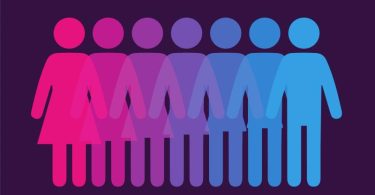Software as a Service (SaaS) and Platform as a Service (PaaS) are two cloud computing models with distinct characteristics. SaaS is a cloud-based software delivery paradigm in which applications are hosted, maintained, and made available to users over the Internet by a third-party provider. Users can access these applications through a web browser without installing, updating, or maintaining software. All technical aspects, including infrastructure, middleware, and data storage, are managed by SaaS providers. The SaaS applications Google Workspace, Salesforce, and Dropbox are examples.
In contrast, PaaS provides a platform for developers to construct, test, deploy, and manage applications without worrying about the underlying infrastructure. PaaS providers offer tools, services, and a runtime environment to facilitate the development and deployment of applications. This enables developers to concentrate on writing code and formulating features while the PaaS provider manages servers, networks, databases, and other infrastructure components. Examples include PaaS offerings such as Google App Engine, Microsoft Azure, and Heroku. The primary difference between SaaS and PaaS rests in their respective target audiences and services. SaaS is geared towards end consumers and provides ready-to-use applications, whereas PaaS is geared towards developers and provides a platform for application development and management. PaaS simplifies the development process, whereas SaaS simplifies software usage.
What is Software as a Service (SaaS)?
Software as a Service (SaaS) is a cloud-based software delivery approach in which applications are hosted and given to users over the Internet by a third-party provider. With this model, users don’t have to install, update, or take care of software on their devices. Instead, they use a web browser to access the apps, which lets them use the software whenever they want. The technical parts of a SaaS service, such as the infrastructure, software, and data storage, are handled by the company that sells the service. This ensures that the apps are always up-to-date, safe, and accessible. Using the cloud, SaaS providers can make their services work for many users and let anyone with an internet connection use them from any device.
SaaS is becoming increasingly popular because it is easy to use, accessible, and cheap. The SaaS approach has a lot of benefits, one of which is that users don’t have to pay for hardware or software licences upfront. It also gives people much freedom because they can use the service anywhere and on any device. With a subscription-based pricing plan, users only pay for what they use. This makes it more affordable for both small and large businesses. CRM (Customer Relationship Management) tools like Salesforce, collaboration apps like Google Workspace, and file storage services like Dropbox are all common types of SaaS applications.
What is Platform as a Service (PaaS)?
Platform as a Service (PaaS) is a cloud computing model that lets developers build, test, deploy, and manage applications without worrying about the infrastructure underneath. The PaaS service takes care of the servers, networks, databases, and other infrastructure parts, ensuring they are up-to-date, safe, and scalable. PaaS providers offer tools, services, and runtime environments that simplify the application development lifecycle. This lets developers focus on writing code and creating features. By taking care of infrastructure management for workers, PaaS allows them to focus on what they do best, which increases productivity and shortens development time.
PaaS has a lot of perks, including saving money because you don’t have to buy hardware and software licences upfront. The pay-as-you-go pricing plan makes sure that users only pay for the resources they use. PaaS also helps development cycles move faster because developers can prototype, test, and launch apps with little setup time. Microsoft Azure, Google App Engine, and Heroku are all well-known examples of PaaS services. These systems support a wide range of programming languages, frameworks, and tools, so developers can choose the ones that work best for their projects. Overall, PaaS is becoming increasingly popular because of how flexible it is, how cheap it is, and how easy it makes the process of making apps.
Difference Between Software as a Service (SaaS) and Platform as a Service (PaaS)
Software as a service (SaaS) and Platform as a service (PaaS) are both cloud-based computing models, but their intended users and the services they offer diverge significantly. SaaS delivers preconfigured, browser-based software to its customers without requiring them to worry about anything beyond using it. Developers can focus on creating code instead of managing the underlying infrastructure because PaaS provides a platform for application development, testing, deployment, and maintenance. SaaS, on the one hand, makes software easier to use for end users, whereas PaaS simplifies software development. The primary differences between SaaS and PaaS are described in greater detail below.
Target Audience
In contrast to PaaS, which is geared towards programmers and provides a platform for creating and maintaining applications, SaaS is aimed squarely at end users, who are given access to pre-built software.
Purpose
SaaS makes it easier for consumers to use software, whereas PaaS helps developers save time.
Infrastructure Management
SaaS vendors take care of server management, upgrades, and other back-end tasks for their customers, while PaaS vendors do the same for their app developers.
Customization
Compared to PaaS, where developers can build apps for specific use cases, SaaS apps are often less flexible.
Access
Users of SaaS access apps through a web browser, while developers use PaaS resources to build and release software.
Pricing
While subscription pricing is commonplace in the SaaS industry, pay-as-you-go or consumption-based models are more common in the PaaS sector.
Examples
PaaS contains solutions such as Microsoft Azure, Google App Engine, and Heroku, whereas SaaS includes apps such as Salesforce, Google Workspace, and Dropbox.
Integration
PaaS platforms typically provide in-built integration tools and APIs to enable easy interaction with other services, whereas SaaS apps may need to be integrated with preexisting systems.






